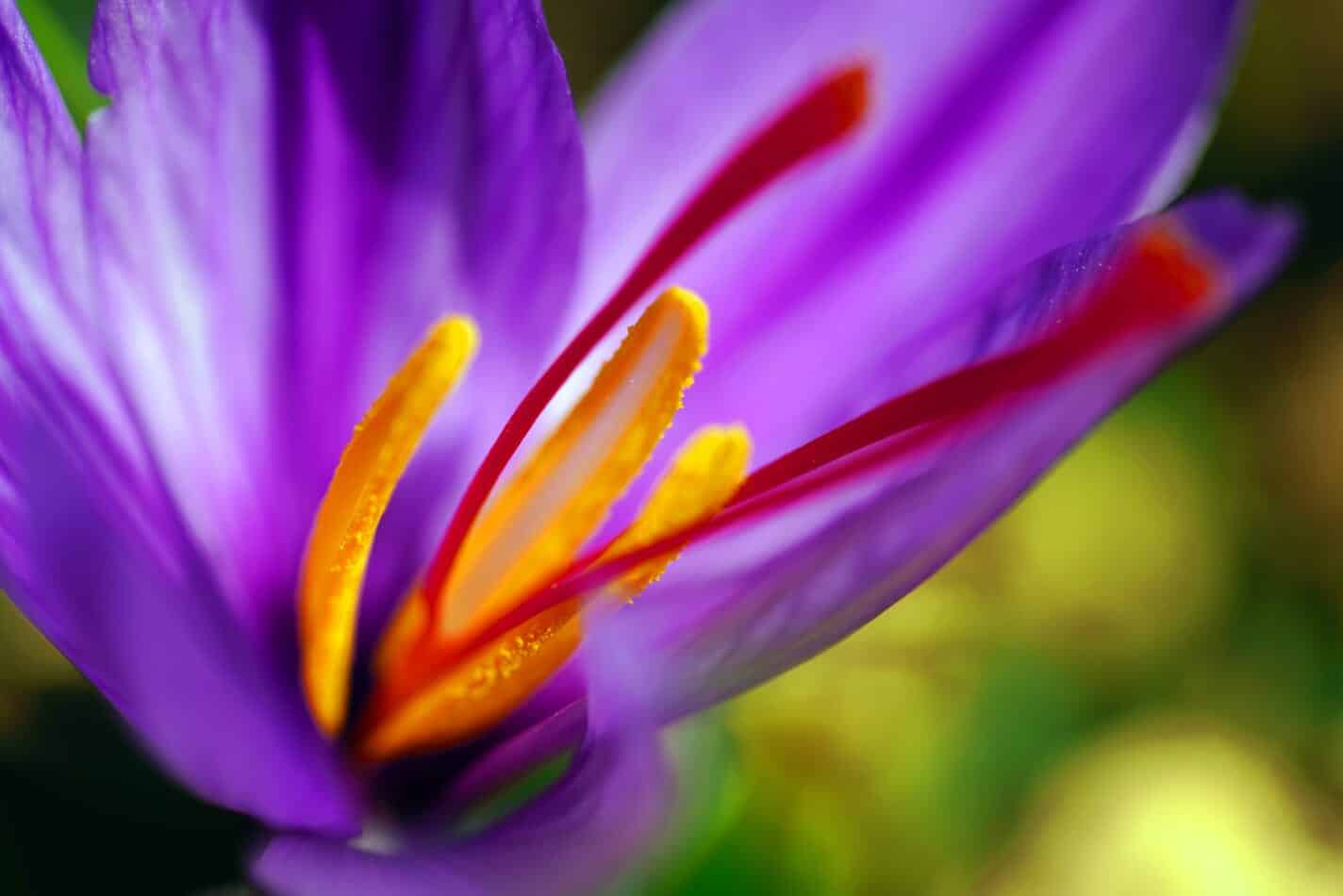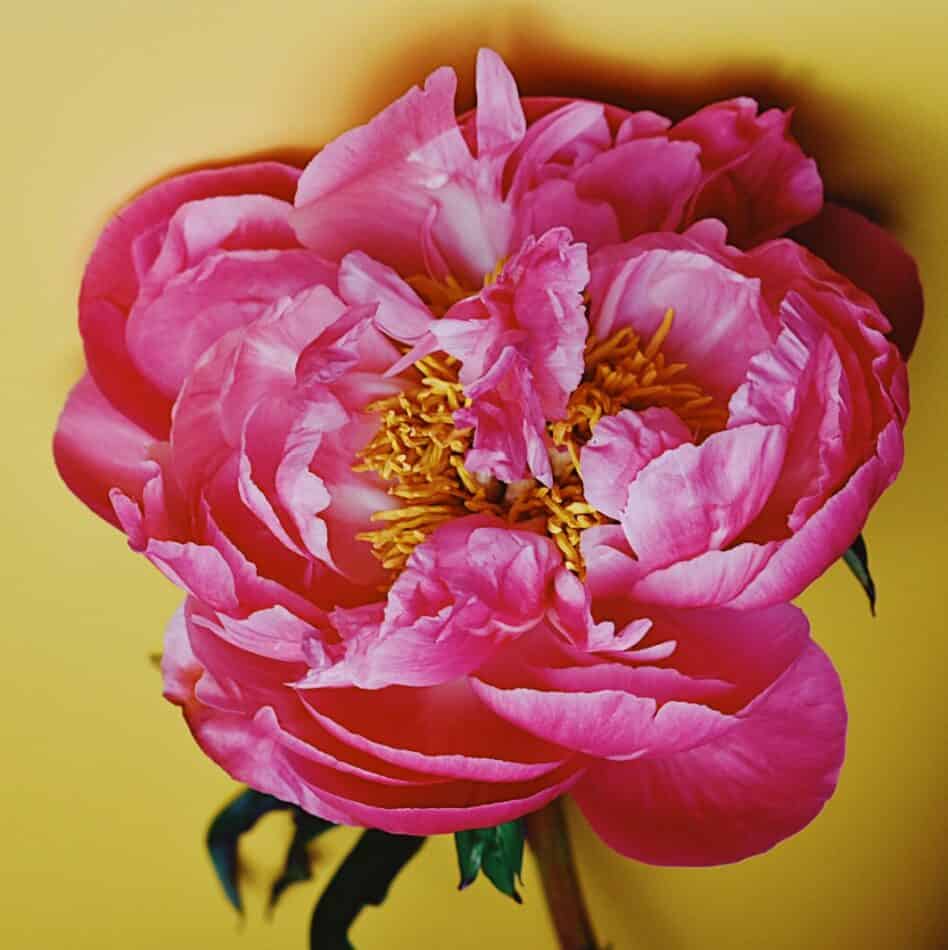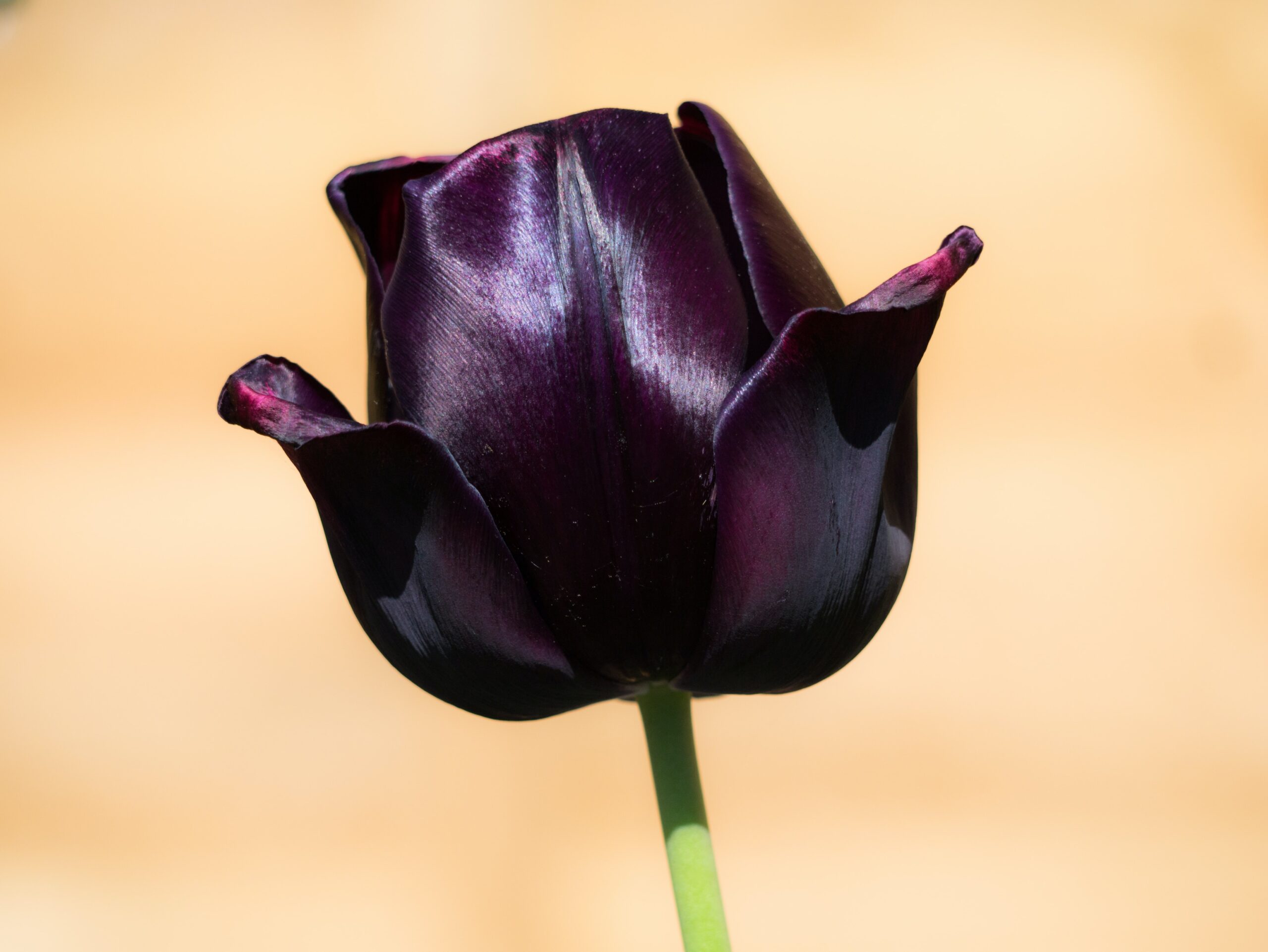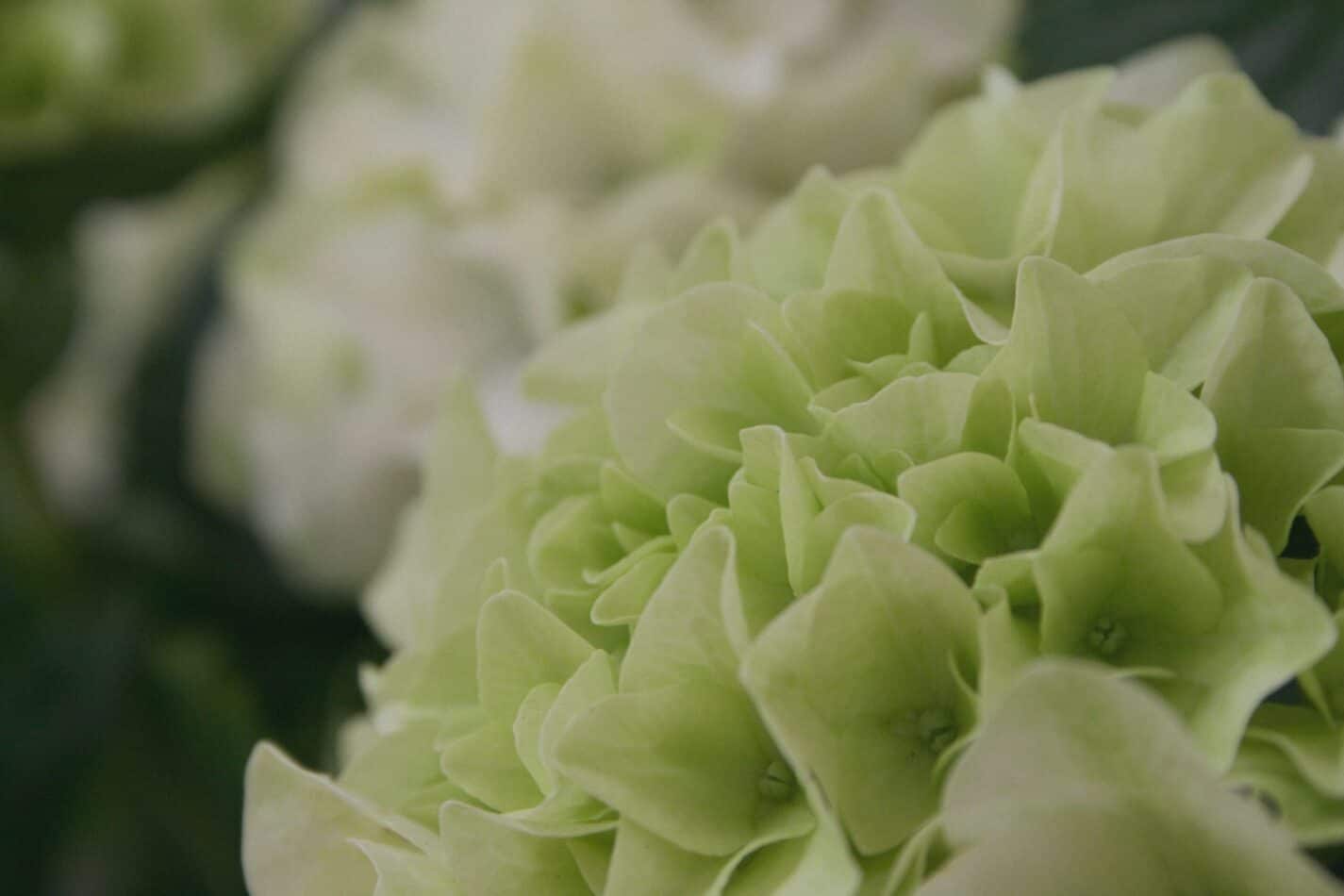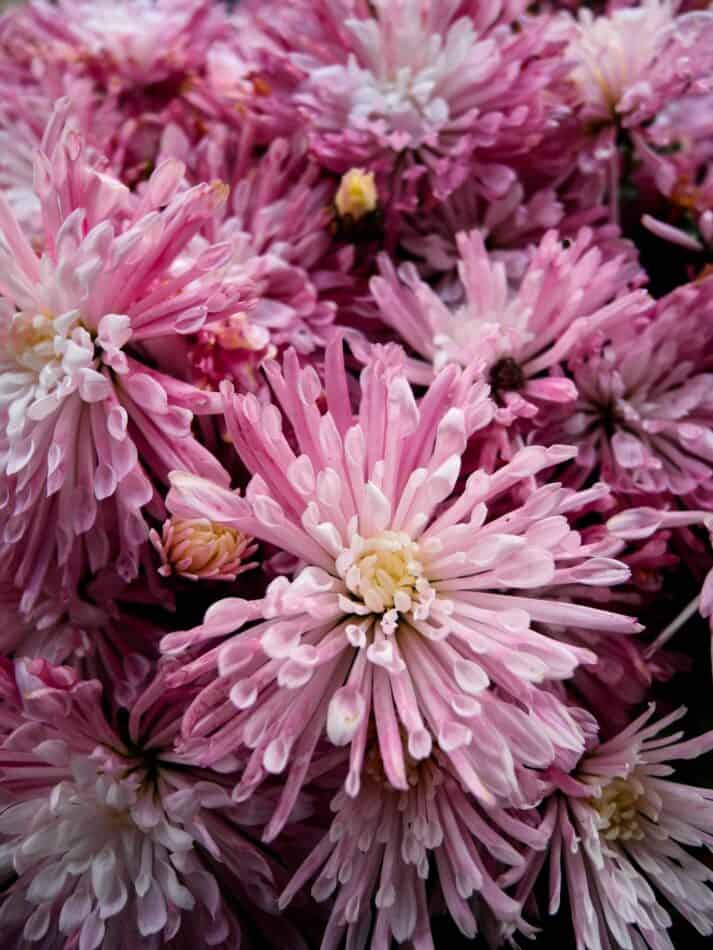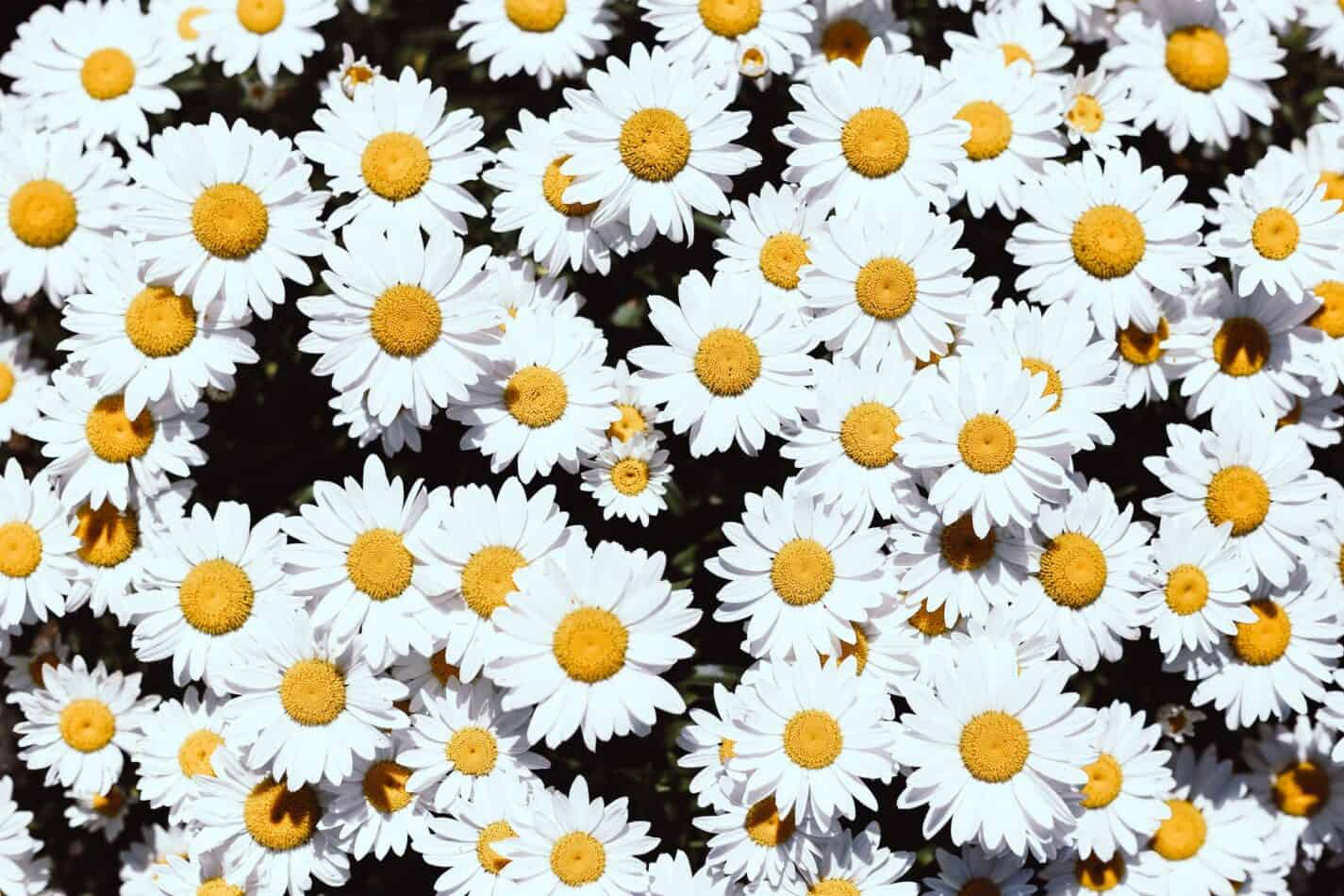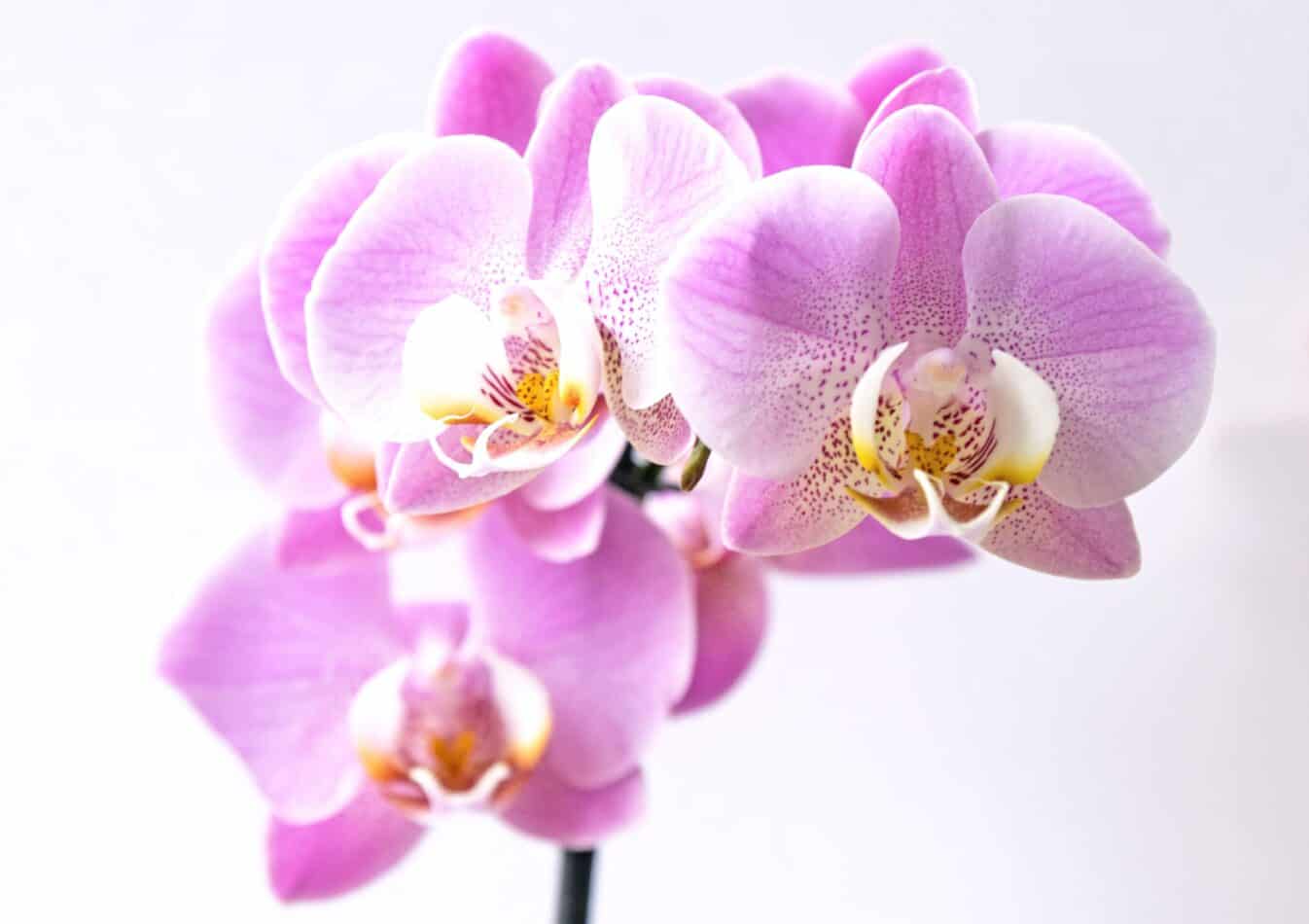Purple flowers are among the most popular types of flowers. They undoubtedly add some beauty to your garden. We asked more than 50 gardeners to understand the nine best purple flowers for your gardens.
The color purple is a very popular color choice for weddings, especially when combined with white flowers or cream ones. A shade of purple can be used as a background color for wedding decorations, such as tablecloths, napkins, and centerpieces. It also makes an excellent backdrop for photos taken at the reception. If you’re planning on having a wedding outdoors, consider using purple as one of the primary colors. Purple petals and deep green foliage make an excellent color combination, and the color combo reduces stress. Bold and royal shades of purple with yellow centers mixed in with other bloom colors create striking contrast in the flower garden.
There are many different purple flowers to choose from with bloom hues that range from pale lilac to dark purple. The sizes also range from a few inches tall to vines that can span 30 feet long when mature.
Check out the nine best purple flowers for your garden and their growing habits, so you can select some that are just right for your landscape.
The 9 Best Purple Flowers For your Garden
- Alliums (Allium giganteum)
Alliums are also known as blooming onions and make a perfect bridge flower to help keep things blooming with purple color from late spring through late fall.
Alliums are native to North America and were first introduced into Europe during the 16th century. His tall purple flower has been grown in gardens since then. Alliums are easy to grow and require little care. You will need to water them regularly but not too much. The ideal amount is 1 inch of water per week.
Plant in full sun or partial-shade location that has well-draining soil. Work compost into the soil before planting allium bulbs to ensure the soil will drain adequately. Alliums prefer moist soil but do not like standing water, so ensure the plant stands in well-drained soil. They need regular watering during dry periods. Alliums have long stems that reach up to 3 feet tall.
In terms of sunlight, alliums prefer full sun. However, they tolerate partial shade. Allium is considered a perennial plant because it lives for more than two years and blooms around mid-summer.
The deep purple ball-shaped flower heads resemble balloon flowers and are borne on a single, slender stem. Each purple flower head comprises many tiny stars, bells, or cup-shaped blooms with a strong fragrance. Flower heads range in size from 1-inch to 12-inches across. Alliums’ tall stem can reach 6-inches to 6 feet tall.
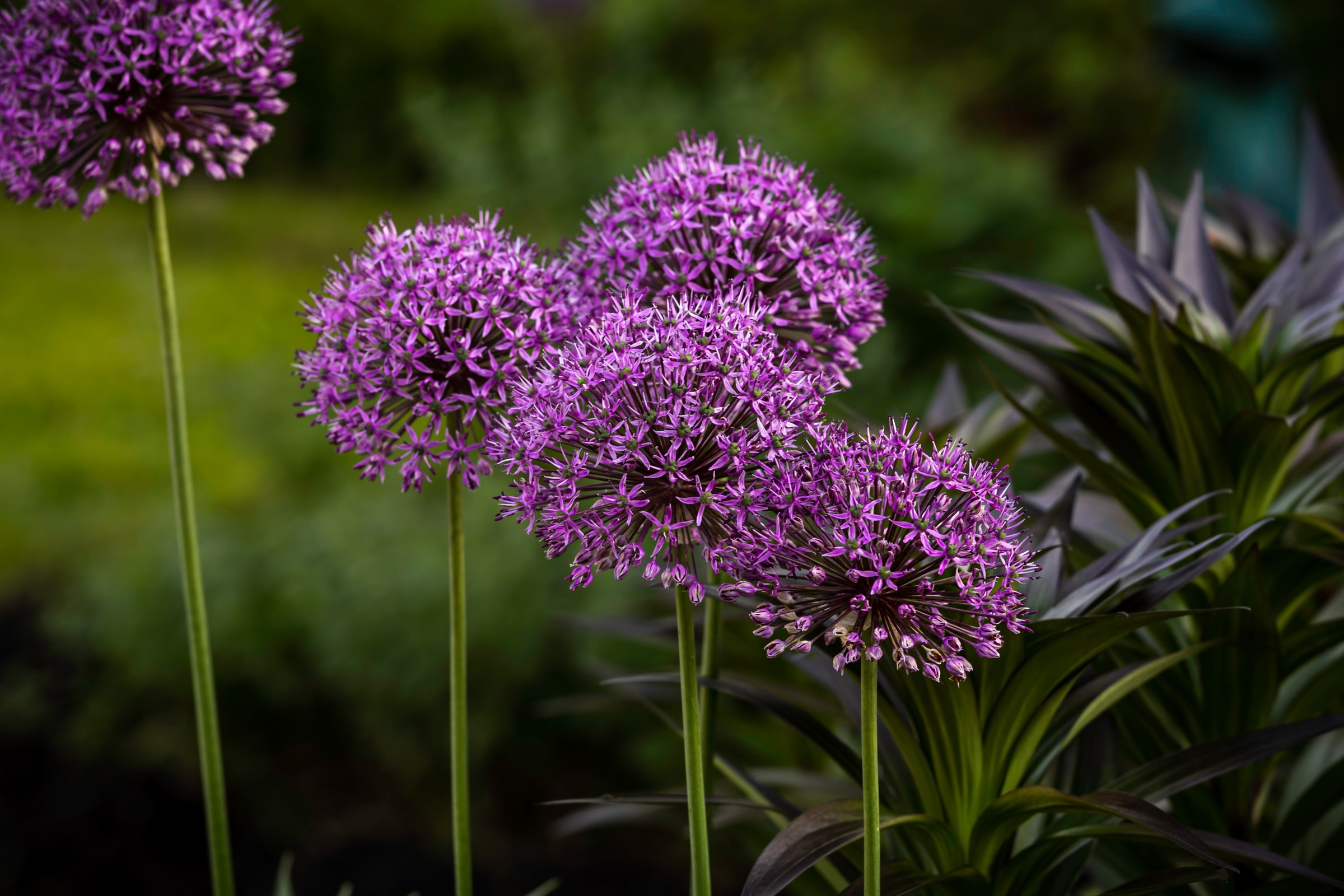
Photo by TC Conner
- Butterfly Bush (Buddleias davidii)
Butterfly Bush are deciduous shrubs bearing masses of purple-flowering panicles that attract pollinators. This shrub’s easy-care, summer-long blooms, and fragrance make it an ideal specimen plant for a landscape. Butterfly bush prefers full sun, although it tolerates light shade— in average, well-drained soils.
The butterfly bush is a plant native to China and Japan. In the United States, butterfly bushes are commonly found along roadsides and in parks with their distinctive purple flowers. Butterflies love this plant because its bright purple flowers look like butterflies. These plants are hardy and can survive temperatures down to 10 degrees Fahrenheit.
It proliferates, and its leaves turn red in autumn. Butterfly bush is drought tolerant once established. It needs little care and maintenance.
You can prune butterfly bush after flowering to encourage new growth. Pruning should be done in late spring. Remove dead branches and thin out crowded foliage. If you want to remove old wood, cut back about half the plant height.
A butterfly bush is a perennial plant. Once established, it will live for several years. The plant may die back in winter. But if you leave it alone, it will come back next year.
A butterfly bush is the top nectar plant to attract butterflies and will reach a mature size of 12 feet tall and 6 feet wide. The shrub can be pruned to be kept at the desired height. Feed once in the spring and water during times of drought.
- Clematis (Ranunculaceae)
Clematis is a genus of climbing plants that bears showy flowers. Clematis is also known as “vine” or “creeper.” There are over 300 species of clematis worldwide. Some species are used as ornamental garden plants due to the
There are three types of clematis: climber, ground cover, and scrambling. Climbers climb using tendrils or twining stems. Groundcovers grow low to the ground and scramble through other vegetation.
There are hundreds of varieties of clematis available. Most are hybrids, which are created by crossing different species. Hybridization allows breeders to develop plants with desirable traits such as disease resistance, increased cold tolerance, and better bloom time.
Clematis are famous for their colorful flowers and ease of growing. They have long been cultivated for their attractive flowers. Many people enjoy planting them in gardens and hanging baskets. Climbing clematis needs support when planted in the ground. A trellis or arbor provides a structure for the vine to climb up. You can use bamboo poles, wooden stakes, or metal wire supports.
Clematis are adaptable and can be grown in almost any type of soil. They prefer moist but not wet conditions. However, some species do best in dry climates. Climbing clematis needs regular watering. Water deeply so that the roots stay saturated. Do not let the soil become soggy. Clematis do not like standing water.
Climbing clematis can be trained into a single stem or multi-stemmed form. Training involves tying the stems to a stake or trellis. Tie each stem individually. Use a soft material such as cotton string. Climbing clematis are easy to grow from seed. Plant seeds directly into the ground in early spring. Cover the seeds lightly with soil. Keep the area well watered until germination occurs. When the first true leaves appear, transplant the seedlings into individual pots. Grow them indoors until they are large enough to move outdoors.
This light purple-flowering vine prefers moist, well-draining soil in full sun, but it will tolerate partial shade. Clematis is a vigorous growing vine that will need a structure to climb on for support.
A purple clematis bloom can be 6-inches across and produce a single or double bloom, depending on the variety planted. A circular ray of petals surrounds the flower center, rich in nectar and attracts hummingbirds for a feast.
The width of a mature clematis is 3 feet, but the height can vary greatly. The vine can reach heights of between 4 and 30 feet.
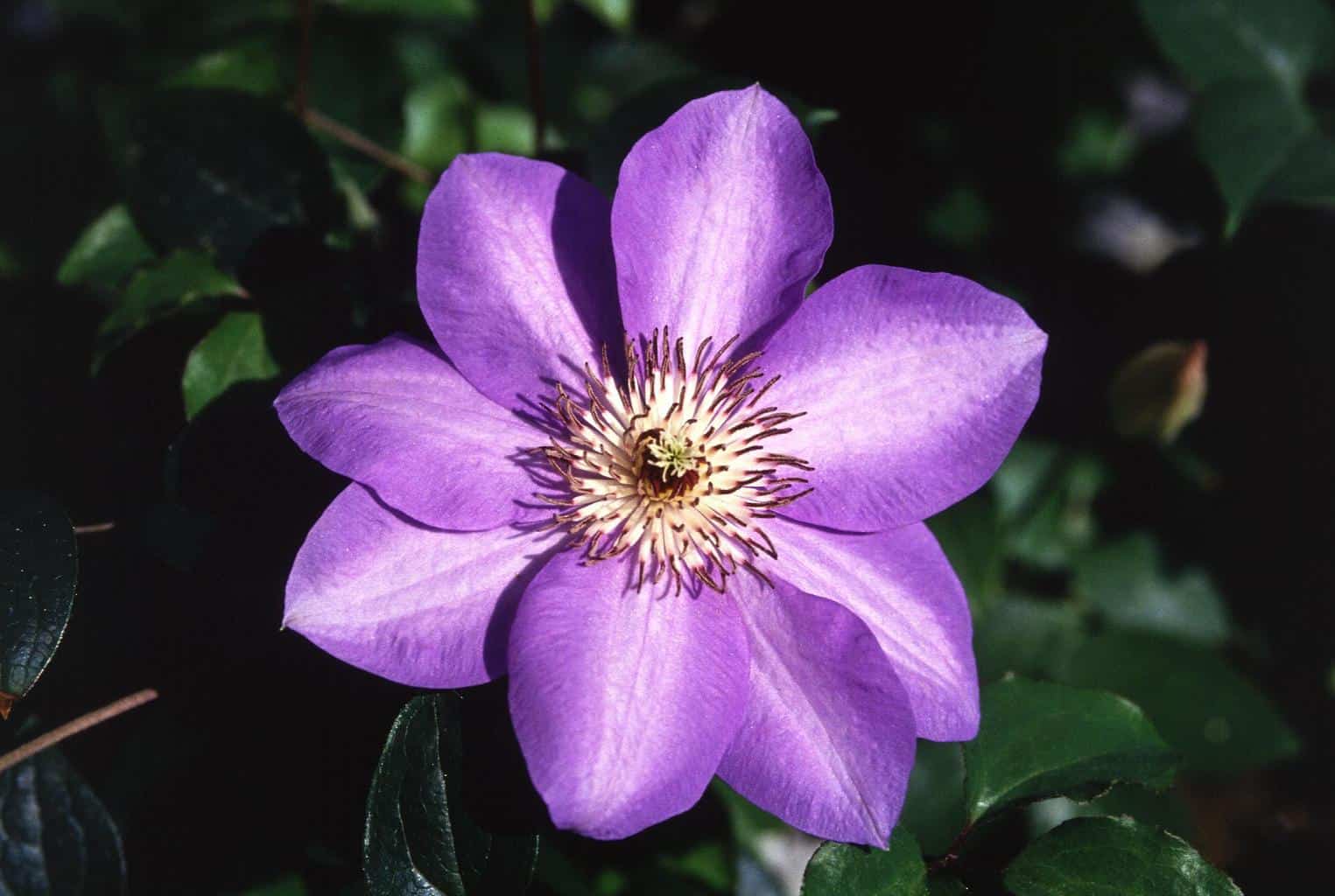
- Lilacs (Syringa vulgaris)
Plant lilacs in the fall so they can establish a robust root system before the bush has to produce fragrant purple flowers in the spring. Plant in a sunny location in well-draining soil. Add compost to the soil to improve drainage before planting a lilac bush because this purple flower will not tolerate soggy soil.
Lilacs are popular garden plants with long-lasting, sweetly scented, trumpet-shaped flowers. They are also known as “Queen Anne” lilies because of their shape. Lilacs are one of North America’s most common types of flowering trees and shrubs.
There are more than 400 varieties of lilacs available today. Some are short and compact; others grow up to 40 feet tall. Most lilacs prefer full sun, but some do better in part shade and cooler climates.
Lilacs require regular watering when they first emerge from the ground. Water regularly until the tree begins to leaf out. Then give only enough water to keep the soil evenly moist after the leaves develop; water less often.
Prune lilacs in early spring when the buds are soft. Cut off any dead or damaged parts of the stems. You can also pinch off the tips of shoots to encourage branching.
If your lilac bush becomes overgrown, cut it back by about half. This encourages new growth.
Lilacs won’t bloom if they are over-fed. Apply 2-inch compost on top of the soil in the spring and water thoroughly. When the bush has bloomed, spread lime and well-rotted manure around the base. Trim the brush to shape it, and remove suckers simultaneously.
- Lungwort (Pulmonaria)
The name of this purple-flowering plant alludes to its’ medicinal usage. Lungwort has long been used to treat lung ailments. The white splotches on the leaves are said to resemble diseased lungs, and the plant used in Purple lungwort blooms are some of the first spring blooms, and the plant is prized for its ability to grow in the shade.
Funnel-shaped purple flowers will be on tall stems above the attractive leaf mound. Leaves range in color from all green to almost all white and splotchy, two-toned patterns. Mature height and width will vary between 8 and 24 inches.

- Salvia (Salvia officinalis)
Better known as common sage, salvia grows 4 feet tall and equally wide. The long sliver stems bear lacey grayish-green leaves to add color, texture, and height to a flower garden before the purple blooms arrive in late summer.
Salvia is native to Europe, Asia, Africa, and North America. It’s hardy in USDA zones 5 through 9. Salvia prefers full sun with good air circulation. Avoid direct sunlight during hot days.
Salvia needs little care once established. Mulch around the roots to prevent weeds and conserve moisture. Remove spent blossoms to prolong the season. Sage is an annual herb that produces large clusters of lavender flowers in mid-summer. The foliage is dark green, glossy, and aromatic.
Sage is easy to grow and requires very little maintenance. You don’t even need to fertilize it! Just provide plenty of light and water.
This fragrant plant is part of the mint plant family (mint family), and its scent will prove it. The distinct sage-like fragrance is easy to discern among other fragrant flowers, and the aroma intensifies when the plant leaves are crushed.
Salvia grows best in full sun and well-draining soil. Plant seedlings in early spring and space 3- feet apart. This sage is hardy in zones 4-9 and will produce many tiny purple flowers on each stem from summer through fall.
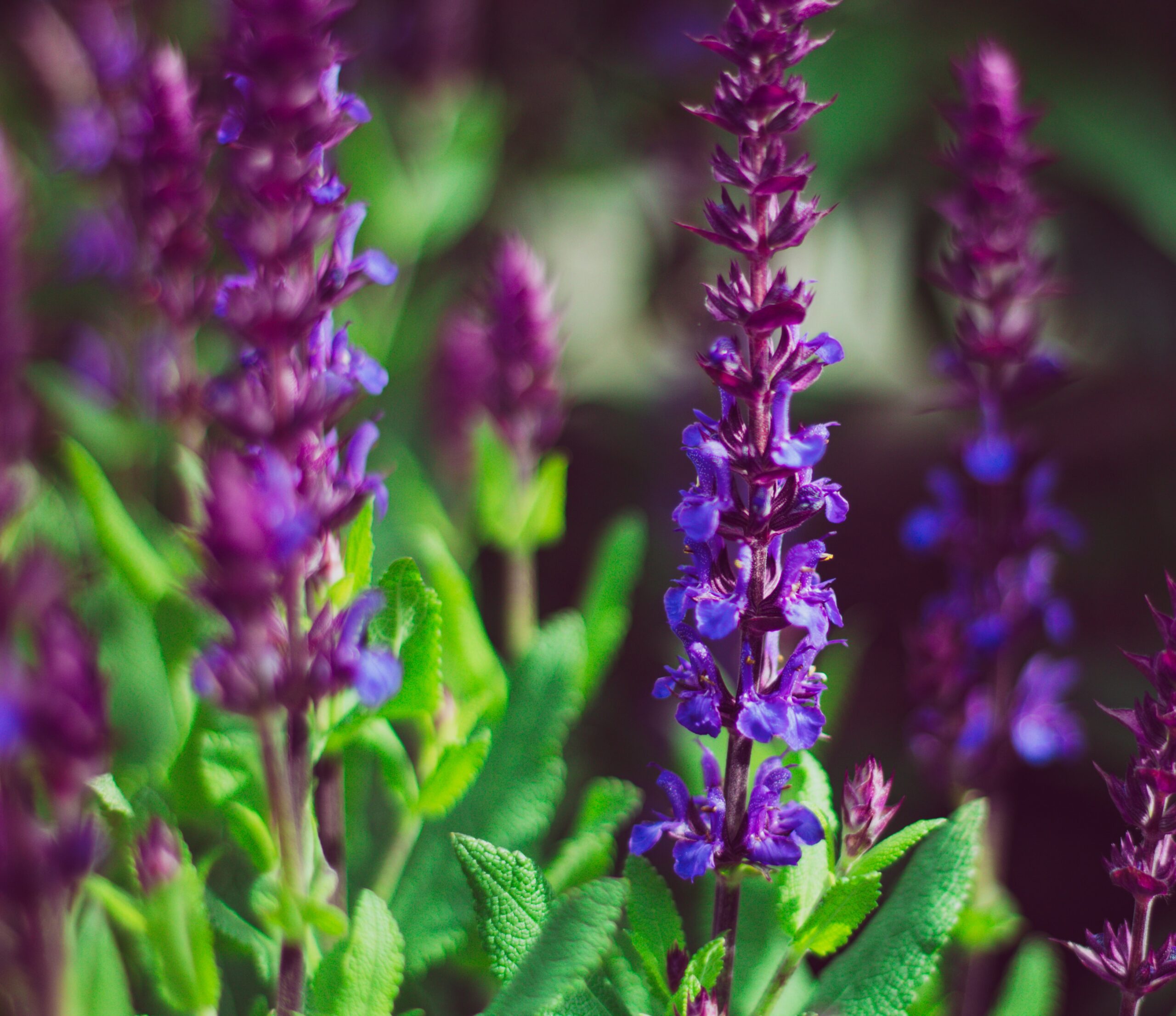
Photo by Sean Foster
- Wisteria (Fabaceae)
Wisteria is a woody climber that is versatile enough to use as a climbing shade, camouflage, tree, or shrub. Wisteria is a hardy vine that produces purple flowers and can tolerate full sun or partial shade.
Choose a location where the wisteria will have plenty of room to grow vertically and horizontally. Wisteria, left alone and never pruned, can reach over 30 feet in either direction.
Over-feeding wisteria will prevent it from blooming. A light feeding in the early spring is all these purple-bloomer needs. Wisteria is native of China, Japan, Korea, and eastern Russia. Wisteria is not fussy about soil type but prefers moist, rich soil to achieve taller plants. If your soil is dry, apply mulch to keep the roots cool and moist, well-drained soil.
Wisteria likes full sun and average temperatures. Prune back any dead branches after flowering to encourage new growth.
Wisteria flowers bloom in late spring and continue into autumn. They’re perfect for adding color to a shady area. Wisteria’s purple blossoms are typically seen in cottage gardens in England, with a wide range of hues, from the pink flowers of the Japanese wisteria variety or the deeper purple shades to the most common lilac flowers. This pretty plant is sure to make an impression. Because of its variety of colors, wisteria is one of the preferred climbing plants by gardeners.
Prune wisteria to the desired height and shape when the blooms have faded in the spring. Be patient with your vine; it can take up to seven years for wisteria to produce its magnificent fragrant purple flowers shaped like a cluster of tiny purple grapes.
- Violets (Violas)
Violets are perfect weather purple flowers bloom best in spring and fall. Violets will bloom all winter with their ‘faces,’ putting a smile on the winter landscape in warm climates.
Violets are native to Europe and Asia, and they prefer cooler climates. They thrive in moist soils and do well in part shade—plant violets in a sunny spot in the garden, near a window, or under a porch. You’ll be rewarded with beautiful purple blooms throughout the year.
Violet flowers are available and have delicate stems and showy blooms. These plants do well in warmer climates in the summer months and are a powerful color component in any garden. They come in varied color patterns and color varieties. My preferred color is light purple with a yellow stamen. It’s a versatile plant with vibrant colors, so it’s a popular choice among gardeners.
Violets reach a mature height of 2-4 inches and make a showy statement when planted as a border plant or in a container. Place the container in a location that will receive 4-6 hours of sun each day, then water the plants thoroughly. Violas can be planted in-ground in the fall also. Select a sunny planting location with well-draining soil for planting these petite flowers for a splash of color.
- Italian Aster (Aster amellus)
The Italian aster is a hardy perennial that proliferates and produces large seed heads. The bright orange/yellow flowers grow in clusters at the top of the stem. This easy-to-grow annual flower is excellent for cutting and arranging and is the perfect choice for gardens.
Italians are native to southern Europe and South America. They require full sun and fertile soil. You may need to protect them in colder regions during the winter months. Italian asters are the flowers of spring; they don’t like solid winds so if you live in a cold climate, make sure if bring the plants indoors during the winter months.
This annual flower is easy to grow and requires little maintenance once established. Once the seeds have matured, pull out the spent plants and replant fresh ones.
The pansy comes from the French word pansier meaning “pantry,” because it resembles a pantry shelf. Pansies are grown primarily for their colorful blooms, which appear in mid-spring. They are straightforward to care for and don’t require much attention.
Pansies are an excellent choice for a bedding plant. They’re low-growing and compact, making them ideal for small spaces. They’re also drought tolerant and pest resistant.
They’re not difficult to grow and require no special care. Sow seeds outdoors in early spring and enjoy the beauty of this easy-care annual flower.
What we love from Amazon this week
Buy these wonderful flowers directly from Amazon:


